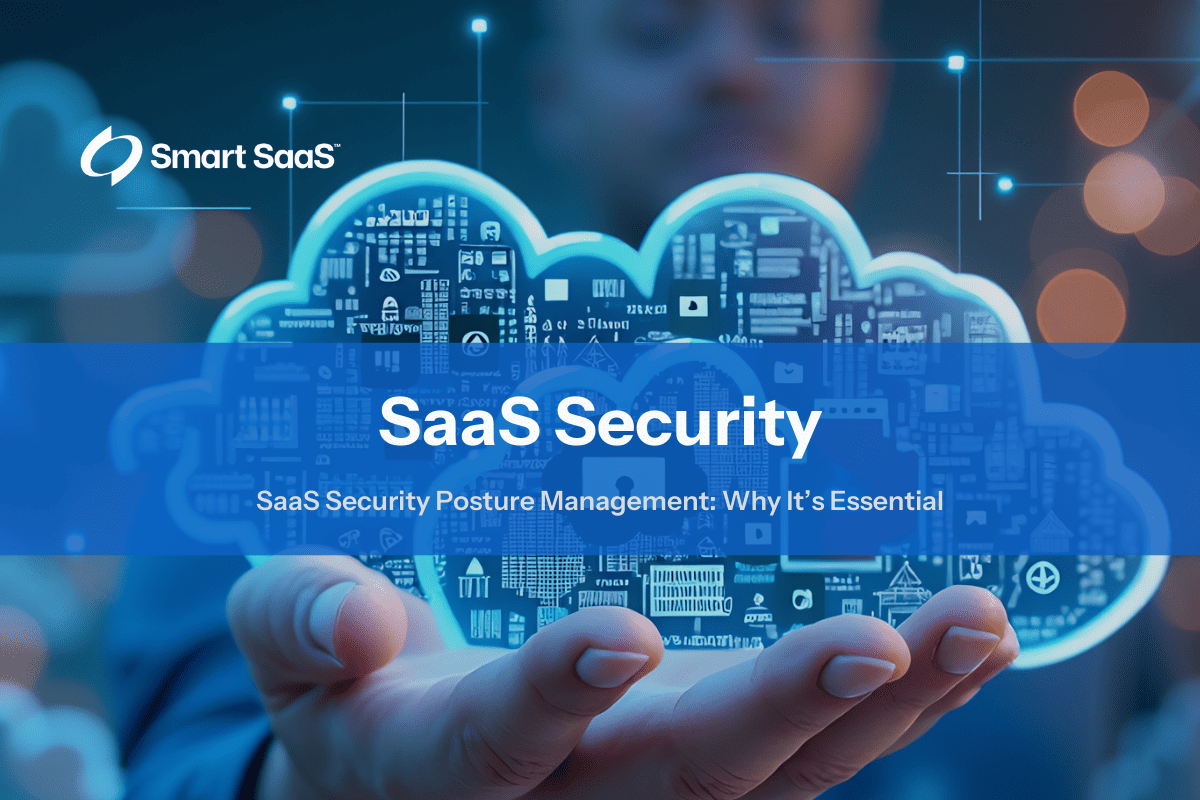

Friday, March 7, 2025
Kevin Anderson
In today’s cloud-driven world, Software-as-a-Service (SaaS) applications have become the backbone of many organizations. From Salesforce to Microsoft 365, businesses rely on these hosted services for streamlined operations, efficient data storage, and effective collaboration.
Yet, this reliance often brings new security challenges and complexities that traditional on‑premises solutions rarely encountered. SaaS Security Posture Management (SSPM) has emerged as a specialized approach to address these challenges, ensuring that companies can maintain a robust security posture across their diverse cloud applications.
This article explores what SSPM entails, why it is crucial for modern businesses, and how it differs from other cloud security solutions like Cloud Security Posture Management (CSPM). We also discuss industry-specific applications and provide best practices to strengthen your overall cloud application security strategy. For additional context on the digital landscape, see our article on what is digital transformation.

SaaS Security Posture Management (SSPM) is the practice of continually monitoring and managing the security configurations, user permissions, and compliance settings of SaaS applications. It is designed to identify and remediate misconfigurations, data exposure risks, and policy violations within cloud‑hosted services. As more organizations shift their critical operations to cloud-based solutions, the need for robust SSPM becomes increasingly important.
SSPM tools help bridge the gap between the security provided by third‑party vendors and the internal requirements of organizations. They empower IT and security teams to maintain oversight and take proactive measures, reducing the risk of data breaches and ensuring that regulatory compliance is continuously met. This proactive strategy is vital for companies that handle sensitive data and need to avoid costly security incidents.
For further insights into cloud security fundamentals, check out our article on what is SaaS.


Implementing SSPM offers numerous advantages that go beyond traditional security measures. A strong SaaS security posture not only minimizes the risk of misconfigurations that could lead to data breaches but also enhances overall visibility into user permissions and application settings.
Organizations benefit from automated alerts that notify security teams immediately when critical vulnerabilities are detected, ensuring rapid remediation. This comprehensive approach not only reduces the potential for data loss but also supports compliance with stringent regulatory standards such as GDPR, HIPAA, and PCI DSS. In addition, maintaining a robust security posture through SSPM can lead to significant cost savings by preventing incidents that might result in financial penalties or reputational harm.
By centralizing security management across various SaaS applications, businesses can streamline their operations and focus on growth without worrying about hidden vulnerabilities.
For more detailed strategies on risk management, explore our article on SaaS Security Concerns.

SSPM tools are tailored to monitor the specific configurations and permission settings within SaaS applications rather than focusing solely on traditional network endpoints. These tools integrate with SaaS platforms via APIs or dedicated connectors, enabling continuous scanning of security settings and automated risk assessment.
By comparing current configurations against established security policies—often aligned with international standards like ISO 27001 or PCI DSS—SSPM solutions can detect deviations that might expose sensitive data. Once these misconfigurations are identified, the tools provide actionable insights and remediation guidelines to help security teams quickly correct vulnerabilities.
This continuous monitoring process is essential in dynamic cloud environments where changes occur frequently and vulnerabilities can emerge unexpectedly. For organizations interested in expanding their security knowledge, our guide on SaaS Security Monitoring offers additional context.
One of the hallmark features of SSPM tools is automated risk detection. These tools continuously scan your SaaS environment to identify misconfigurations, vulnerabilities, and policy violations. By leveraging advanced algorithms and predefined security frameworks, they can detect issues such as excessive permissions or unauthorized access almost immediately. This automated approach ensures that potential risks are flagged and prioritized based on severity, allowing your security team to address the most critical issues first.
Beyond detection, SSPM platforms are designed to assist with the management of configurations and user permissions. They help enforce best practices by automatically recommending or applying changes that align with security policies. For example, these tools can prune excessive permissions and validate that user roles match their job requirements. This level of control is crucial to prevent security breaches resulting from human error or misconfigured settings.
Modern SSPM solutions also focus on ensuring that your SaaS applications comply with various regulatory standards. They provide real-time dashboards and generate detailed audit logs that help in continuous compliance monitoring. These features allow organizations to produce on-demand reports for internal audits or external regulatory bodies, simplifying the compliance process significantly. Such capabilities not only help in maintaining a secure environment but also build trust with customers and stakeholders.
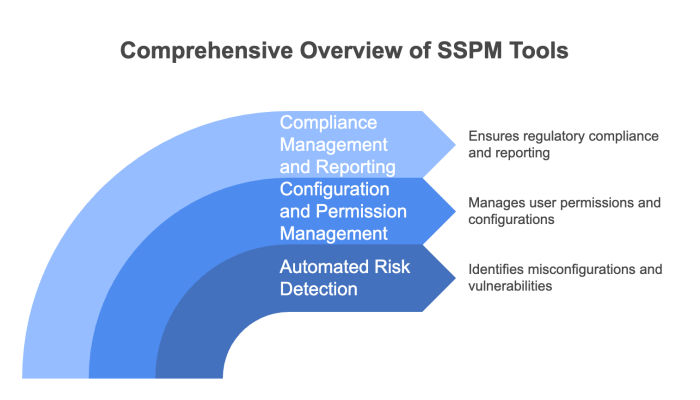

Proactive management of SaaS security through SSPM is critical for businesses of all sizes. Proactively monitoring your cloud applications enables you to detect and remediate vulnerabilities before they are exploited by attackers. SSPM helps minimize data exposure by ensuring that user permissions and configurations are continuously optimized. It also streamlines compliance by automating audits and generating reports that align with regulatory standards.
This not only protects your sensitive data but also saves you from potential legal and financial repercussions. Moreover, by centralizing the management of your SaaS security posture, you can reduce administrative overhead and improve operational efficiency.
This proactive approach is essential in today’s fast‑paced threat landscape, where the cost of a data breach can be devastating. Learn more about how proactive security measures can benefit your organization by reading our article on SaaS Security Concerns.
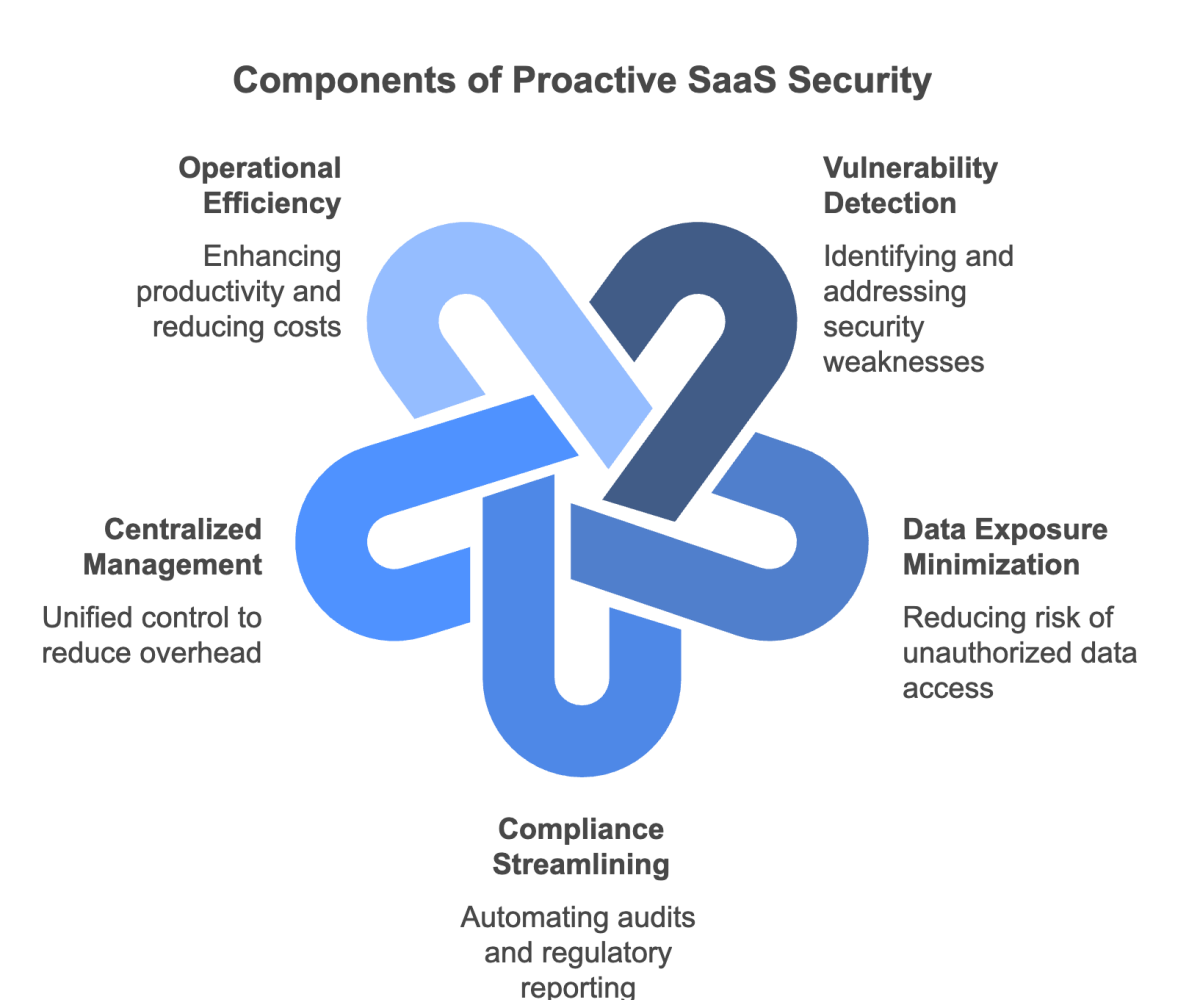

Misconfigurations are one of the leading causes of data breaches in cloud environments. SSPM tools address this risk by consolidating configuration data from multiple SaaS applications into a single, unified view. This centralization allows administrators to quickly spot and rectify anomalies such as overly permissive access or misapplied settings.
Many SSPM platforms also offer automated remediation playbooks, which guide security teams through the necessary steps to resolve issues effectively. Additionally, these tools provide real-time alerts that notify the appropriate personnel as soon as a critical misconfiguration is detected, significantly reducing the window of vulnerability.
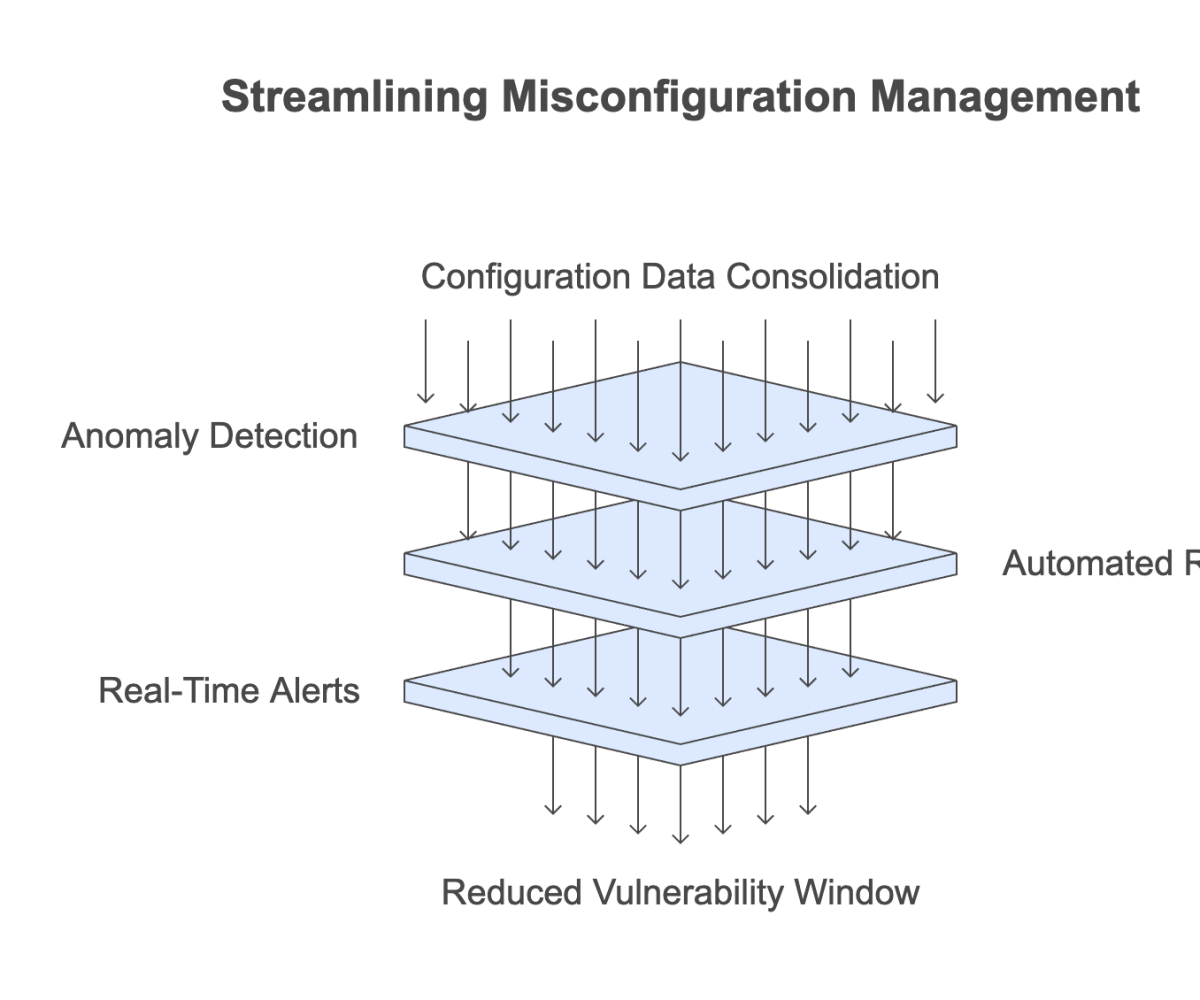

Maintaining compliance across your SaaS environment is essential for protecting sensitive data and meeting regulatory standards. To achieve this, start by defining your compliance requirements based on relevant regulations such as PCI DSS, HIPAA, or GDPR. Customize the out-of-the-box policies provided by your SSPM tool to reflect your organization’s specific workflows and risk profile. Automating the generation of compliance reports not only saves time but also ensures that you have up-to-date documentation for audits. Regular posture assessments should be scheduled to verify that all SaaS configurations remain compliant over time. These steps are vital to ensure that your security measures evolve with changing regulations and business needs. For further insights into building a resilient SaaS strategy, visit our guide on How to Build a Successful SaaS Business Model.


A zero trust security framework is built on the principle that no user or device should be trusted by default, regardless of its location. In the context of SaaS, this means that every access request must be continuously verified, and permissions must be strictly enforced. SSPM tools support this approach by ensuring that every SaaS application adheres to the principle of least privilege.
They monitor user activities and configuration settings in real time, and automatically adjust security controls to prevent unauthorized access. By segmenting access and continuously validating user behavior, SSPM tools help create a more resilient security environment. This approach minimizes the risk of lateral movement within your network and reduces the potential impact of a breach. To learn more about implementing a zero trust strategy, check out our article on Vertical SaaS vs. Horizontal SaaS.
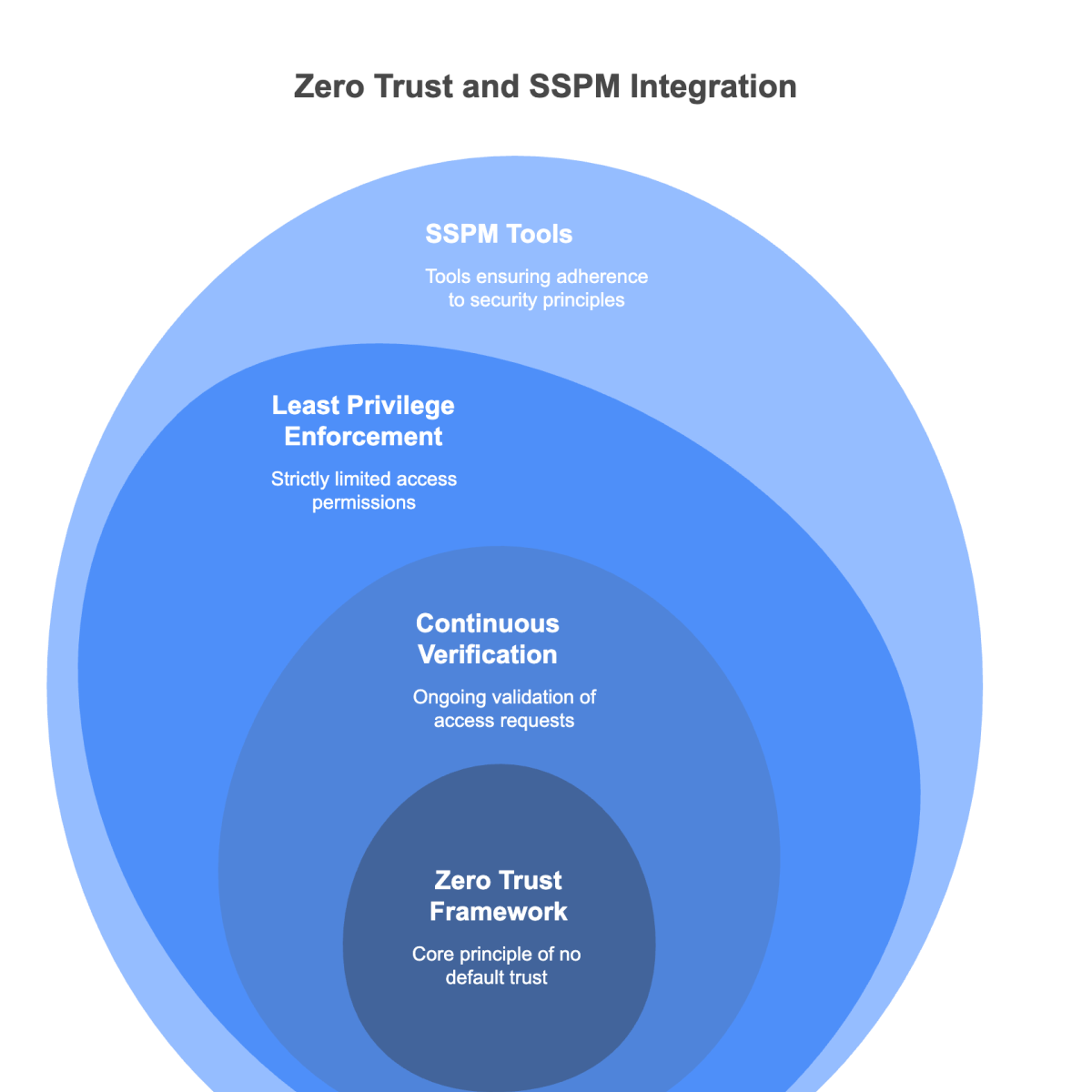

The rapid adoption of cloud-based services has revolutionized business operations, but it has also introduced new security challenges. SaaS Security Posture Management (SSPM) is an essential tool that provides continuous oversight of your SaaS configurations, ensuring that misconfigurations and security gaps are identified and remediated in real time.
By implementing SSPM, organizations can reduce the risk of data breaches, maintain compliance with regulatory standards, and safeguard their sensitive information. Whether you are in e-commerce, healthcare, finance, or another industry, a strong SSPM strategy is crucial for protecting your digital assets.
A proactive SSPM approach not only improves security but also builds trust with customers and stakeholders, ensuring that your cloud environment remains robust and resilient in the face of evolving threats.

Ready to take your SaaS security to the next level? Download our free eBook, "SaaS Security Unmasked", for an in‑depth exploration of how to build a robust, future‑proof security program for your cloud applications. This comprehensive guide covers everything from best practices for authentication and access management to advanced risk detection and compliance strategies. Equip your organization with the knowledge and tools to safeguard your digital assets, minimize vulnerabilities, and ensure continuous compliance in an ever-changing threat landscape.
Below are some frequently asked questions about SaaS Security Posture Management, along with practical answers to help you enhance your security posture.
SaaS Security Posture Management is the practice of monitoring, assessing, and remediating security configurations and permissions within SaaS applications to prevent data exposure and ensure regulatory compliance.
Zscaler’s solution emphasizes automated risk detection, offering real‑time alerts and remediation recommendations for misconfigurations, which significantly reduce the likelihood of data breaches.
SSPM tools automatically scan for policy violations, misconfigurations, and overly permissive user roles. This proactive monitoring helps reduce the risk of breaches and ensures that your SaaS environment remains compliant with relevant standards.
SSPM focuses on security configurations within SaaS applications—such as user permissions, data sharing, and compliance settings—while Cloud Security Posture Management (CSPM) addresses security at the broader cloud infrastructure level, including IaaS and PaaS components.
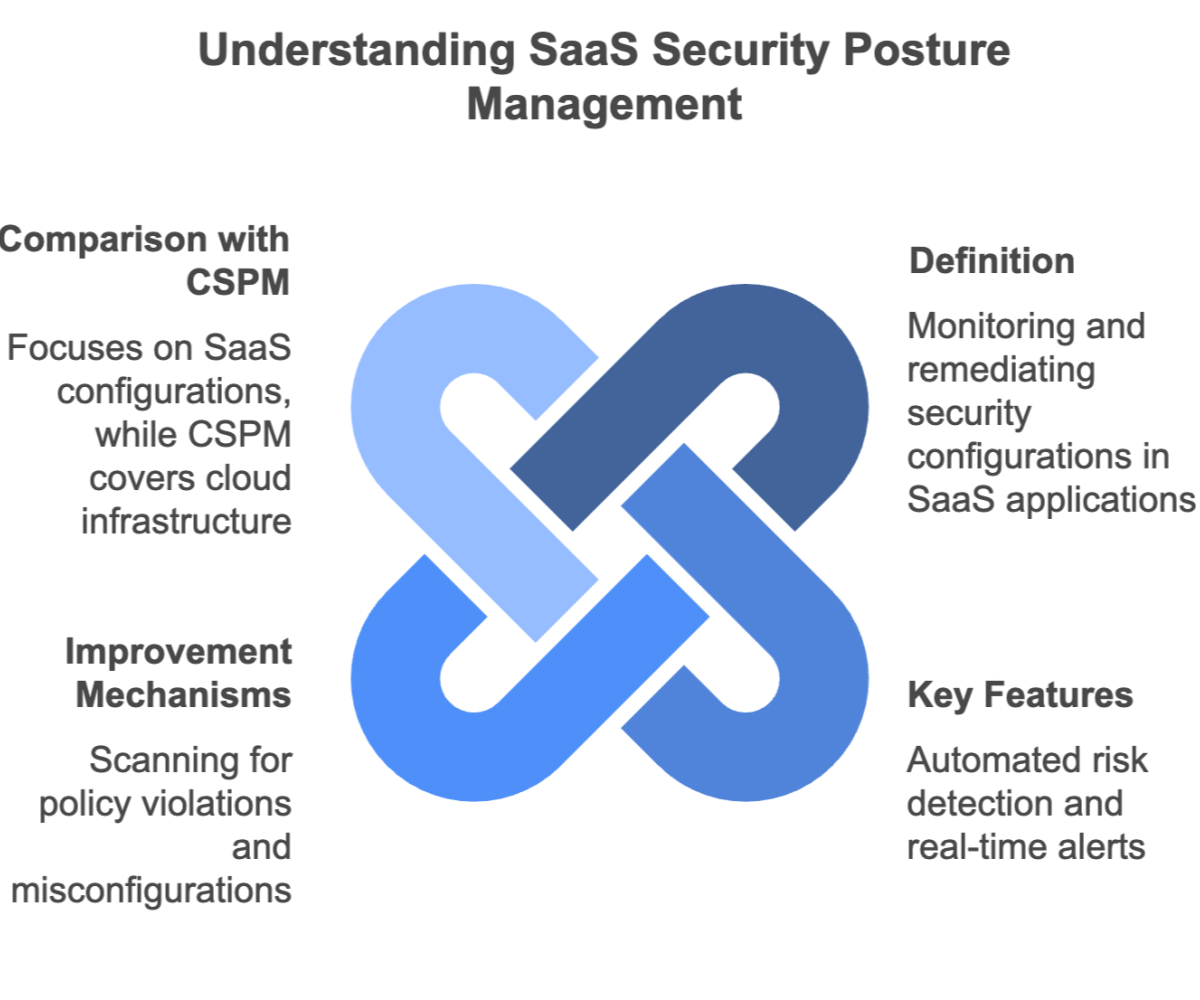

For more insights on securing your cloud environment, check out these related articles: